“What is Left Unspoken, Love”: The High Museum of Art’s stunning new exhibit
What does the word love mean to you? The High Museum of Art’s new exhibit: “What is Left Unspoken, Love” seeks to understand the concept of love and how it functions in different areas of our life. Over 35 artists specializing in a multitude of different mediums all explore love, relationships, understanding of self, community and more.
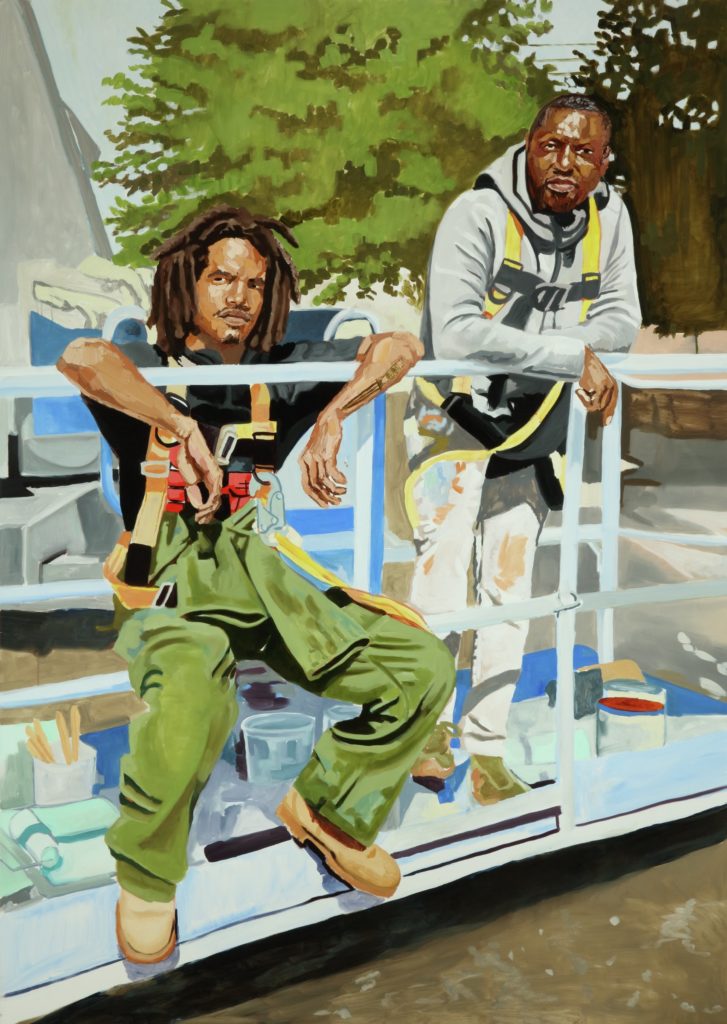
Gerald Lovell (American, born 1992), Friendship Tower, 2021, oil on panel, High Museum of Art, Atlanta, gift of John Auerback, 2022.30. © Gerald Lovell. Photo by Mike Jensen/Courtesy of the High Museum of Art. 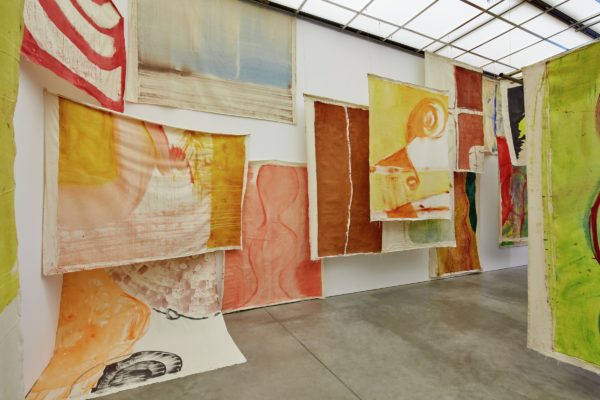
Vivian Suter (Argentine, born 1949), installation view of Vivian Suter at Institute of Contemporary Art, Boston, 2019 (pictured here). Twenty-four untitled and undated canvases, courtesy of the artist and Gladstone Gallery, New York and Brussels. © Vivian Suter. 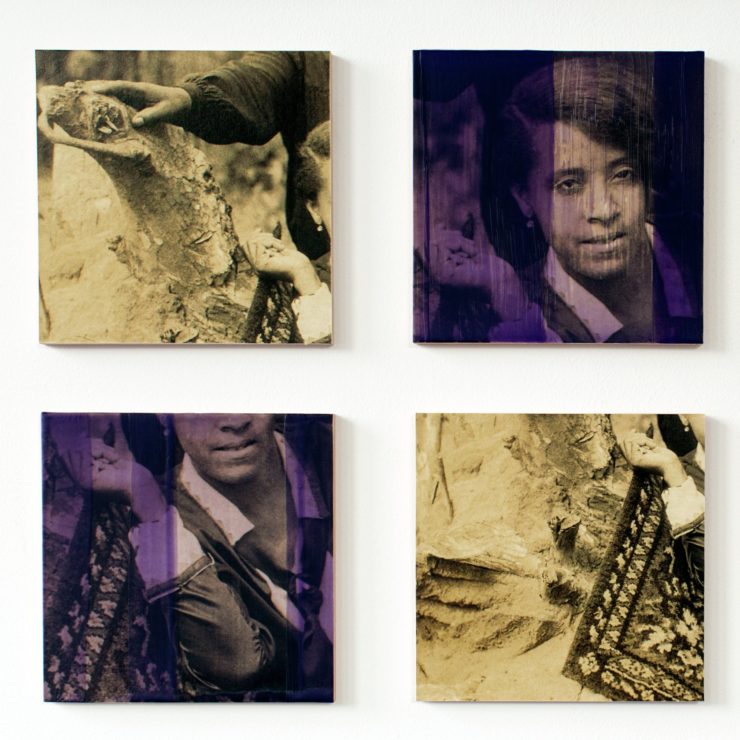
Alanna Fields (American, born 1990), detail from Our Love Was Deeply Purple, 2021, pigment prints mounted on museum board, encaustic on panel, courtesy of the artist. © Alanna Fields. Photo: courtesy of the artist. 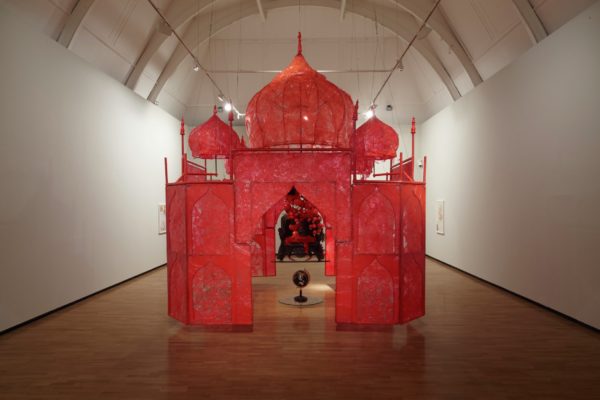
Rina Banerjee (Indian, born 1963), Take me, take me, take me … to the Palace of love, 2005, Reynolds Wrap, copper, steel, brass, semiprecious stones, Bakelite, Styrofoam, archival tape, feathers, wood, dimensions variable, courtesy of the artist. © Rina Banerjee. Photo by We Document Art. 
Rashid Johnson (American, born 1977), still from The Hikers, 2019, 16mm film transferred to digital video with sound, duration 7:14 minutes, High Museum of Art, Atlanta, anonymous gift, 2021.171. © Rashid Johnson. Photo courtesy of the artist and Hauser & Wirth.
The exhibit is divided into six thematic sections. In the first of these, titled “The Two,” artworks focus on the passionate, heartfelt and eager love of two people. One of the pieces in “The Two” is a series of 16 photographs by artists and couple RongRong&inri titled “In Fujisan, Japan.” The series depicts the artists and lovers nude staged in front of Mount Fuji. They sought to perform naked in freezing temperatures as a testament of their vulnerable yet unceasing love for each other as newlyweds.
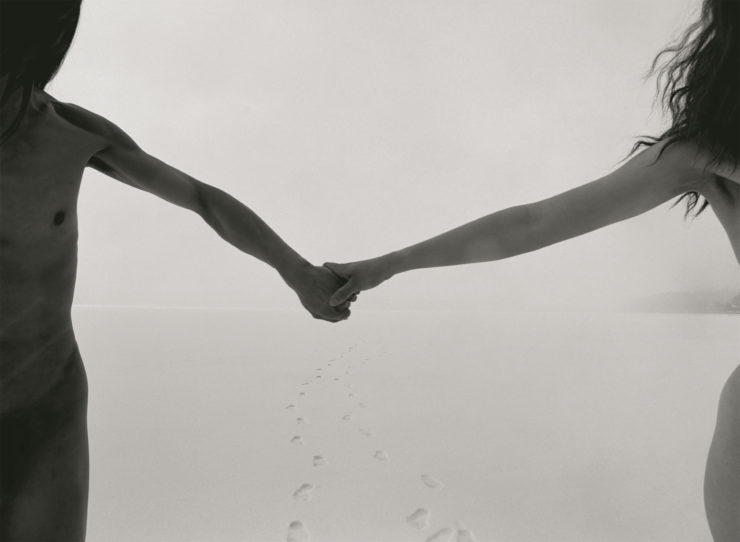
Romantic love does not define all of the word, however. In fact, most people first experience love in the home. In the next themed room titled “The School of Love,” artworks are focused on familial bonds and in turn, struggles. Carrie Mae Weems photography “The Kitchen Table Series” wraps the room with framed pieces of text. Paired with the emotional yet nostalgic narrative, Weems tells the story of a woman’s life and her relationship with her lover, career, children and societal struggle as a Black woman.
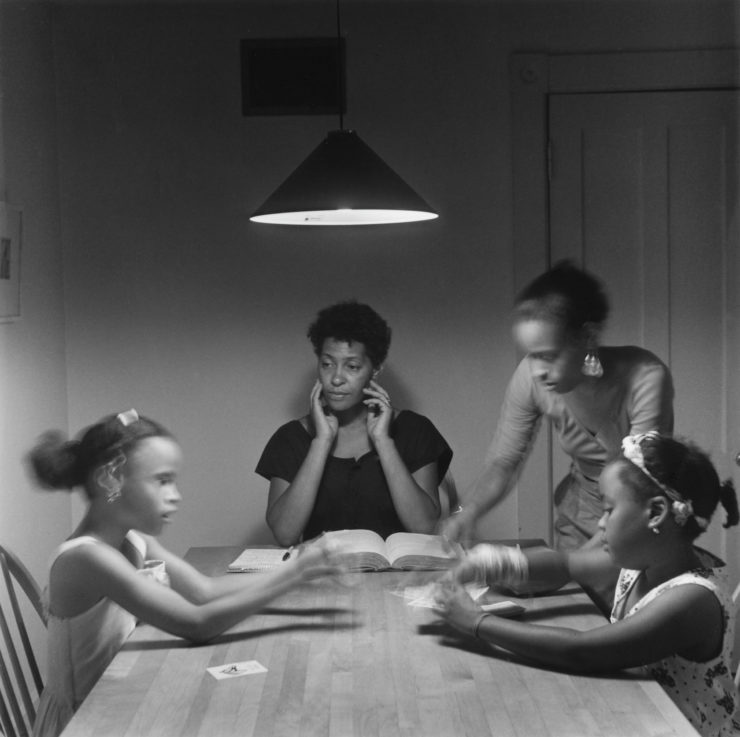
In Patty Chang’s “Que Sera Sera/Invocations”, Chang seeks to highlight the painful emotions of watching ones parents decline in health as they age. A two-channel video plays, on the left is Chang singing a song to her newborn son while her father actively dies in the hospital bed next to her. On the right video screen is Chang’s mother scrolling through a tablet screen reading phrases that remind her of her husband in his last days on Earth. She struggles to read certain words, signaling her own age. “Invocation of noise reducing headphones,” “Invocation of silence,” “Invocation of slurry croaky voice,” and “Invocation of gasping” are some of the phrases.
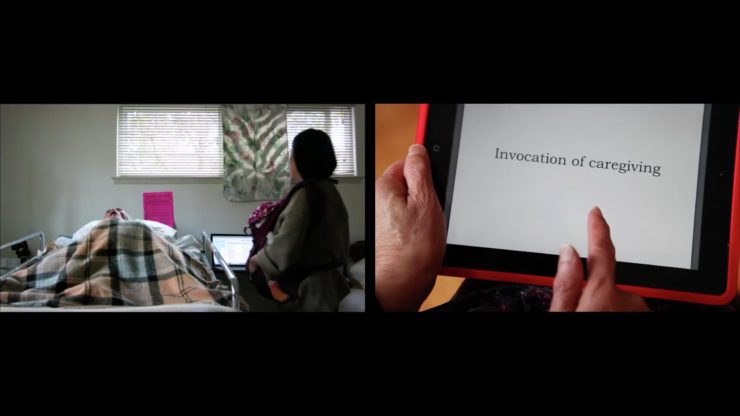
In the next room, “The Practice of Love” founds itself on the same principle as “The School of Love” but with an emphasis on consistency and devotion. Eight of Susanna Coffey’s stunning self-portraits accompany this idea. In order to love another, one must love themselves. Coffey’s portraits are made with the artist’s intention to explore her identity and spirituality.
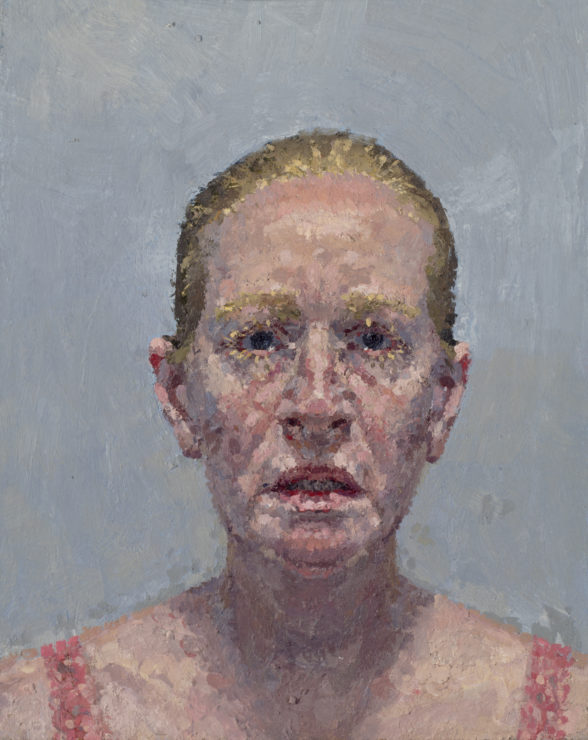
In the fourth themed room, “Loving Community,” artworks aim to explore brotherly love, friendships, compatriots and community. Sometimes, these relationships are closer than those of family. A featured collection of works in this section, Tomashi Jackson’s artworks depict the struggle for equal rights and voting in the 1960s. In “Is Anybody Gonna Be Saved? (1948 Middle of Voter Registration Line) (1965 Abernathy and King Watch the Signing of the Act)” Jackson uses photos of prominent Black voting rights trailblazers active in Georgia like Dr. Martin Luther King Jr., John Lewis and Stacey Abrams. Jackson uses soil from the Ohio Underground Railroad and modern political campaign flyers to comment on the struggle to vote that still exists for Americans of color. “Is Anybody Gonna Be Saved” was completed in 2020 at the height of the presidential election and two years after the intense Georgia race for governorship.
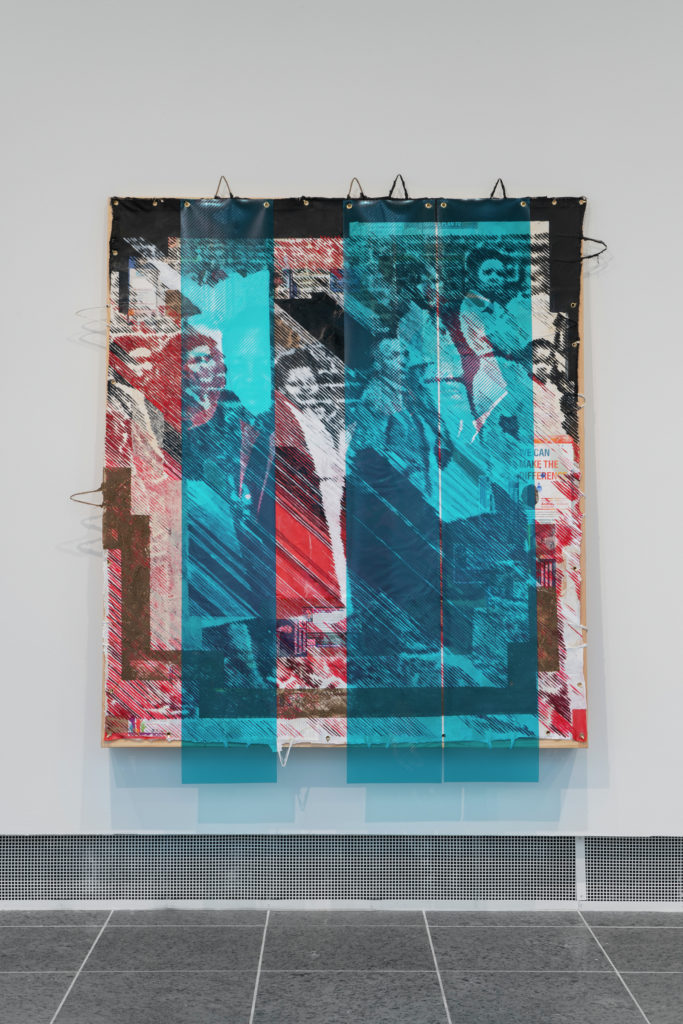
The link between art and poetry existed even in ancient times. Expressing love through poetry, love letters, love songs and sign language are seen in the fifth themed room: “The Poetics of Love.” Ghada Amer’s “The Words I Love the Most” depicts the artist’s favorite expressions related to love. Written in beautiful Arabic calligraphy and then cast in bronze, the artist intentionally made the script backward. The words are only legible when viewed from the inside of the piece or by using a mirror to suggest to the viewer to find the meaning of love in themselves.
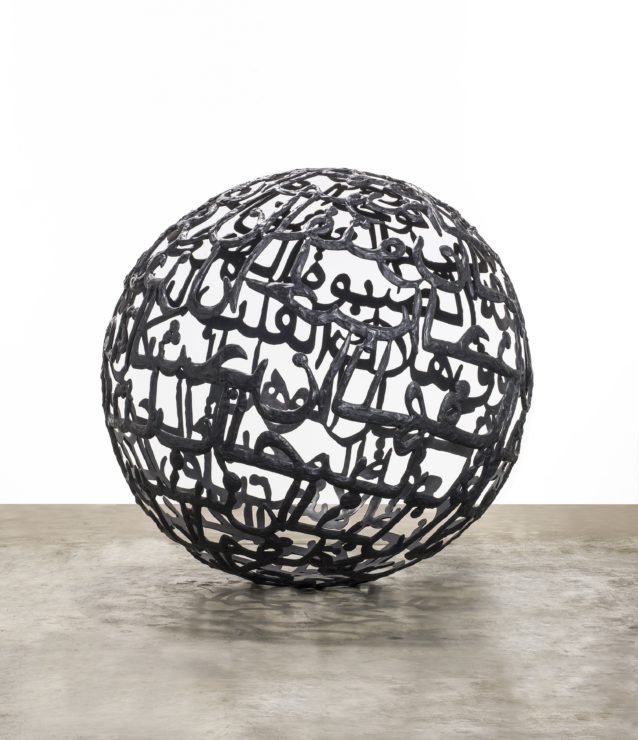
Lastly, “Love Supreme” allows viewers to contemplate the connection between love, spirituality, nature, culture and self. Michelle Stuart’s “In the Beginning: Time and Dark Matter” intrigues and engages the viewer with seashells of various colors, shapes and sizes and photos of space and sea. Stuart wants to challenge the viewer’s ordinary understanding of the shells and photos of space to open our awareness to the material and immaterial world around us.
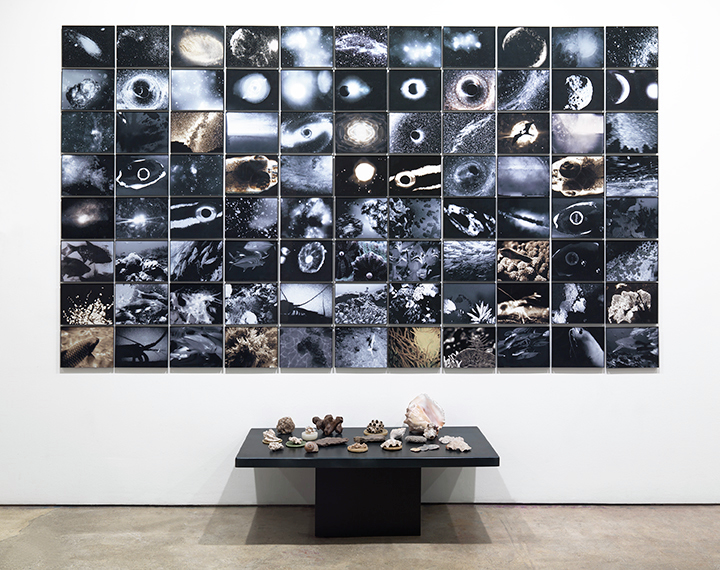
At the very end of the exhibit is a room titled “Pulse Room” by Rafael Lozano-Hemmer. In “Pulse Room” participants can hold two rods that detect and light dozens of ceiling-strung light bulbs to flash to your pulse. The room makes a pulsating noise as the lights flash. When the participant lets go, the room goes black before each light bulb is relit one by one across the room. “Pulse Room” connects the audience to themselves, other visitors and to a collective humanity.
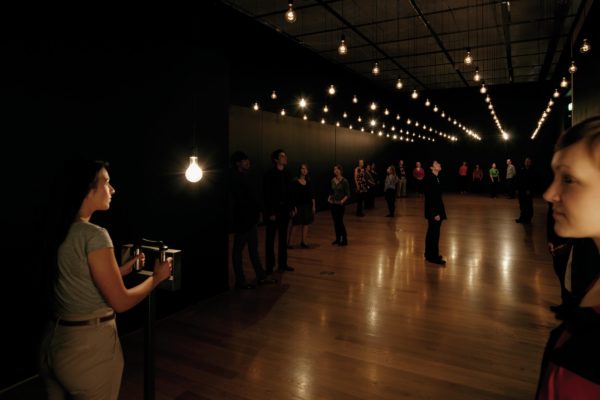
“What is Left Unspoken, Love” is beautiful, heartbreaking, ethereal and enlightening. Each visitor is able to connect and relate to each themed room and reflect on their own relationships, values and self. The exhibit is on view until August 14, 2022 on the second level of the Wieland Pavilion.


























